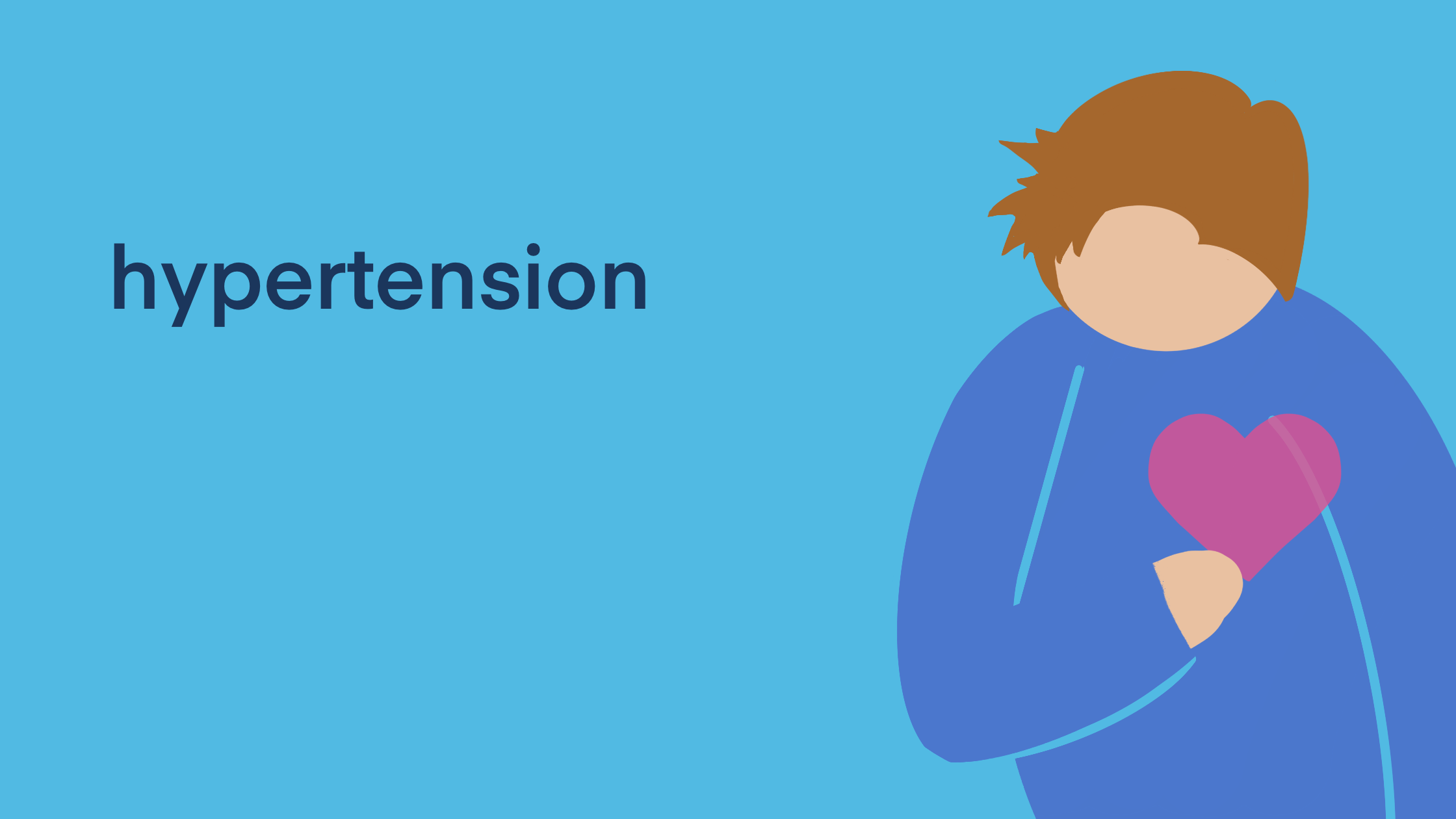
Hypertension or high blood pressure affects approximately 40% of adults ranging 25 years old and over worldwide. This condition causes 7.5 million deaths annually and is considered a major risk factor for hemorrhagic stroke and coronary heart disease. Complications of hypertension include renal impairment, retinal hemorrhage, and visual impairment. When living with hypertension, it is important to ensure that you are constantly monitoring your health status and maintaining a healthy lifestyle.
Pathophysiology of hypertension
Normal blood pressure at rest for most adults is within the range of 100 to 130 mmHg systolic and 60 to 80 mmHg diastolic. High blood pressure is usually defined as a resting blood pressure that is consistently at or above 140/90 mmHg.
Increased resistance to blood flow is usually the cause for high blood pressure in adults. For some young people, increased cardiac output and elevated heart rate may be the primary causes for their hypertension. As these patients age, their peripheral resistance to blood flow increases and becomes most responsible for hypertension in later life. Increases in resistance to blood flow is mainly caused by the narrowing of arteries and arterioles in the body.
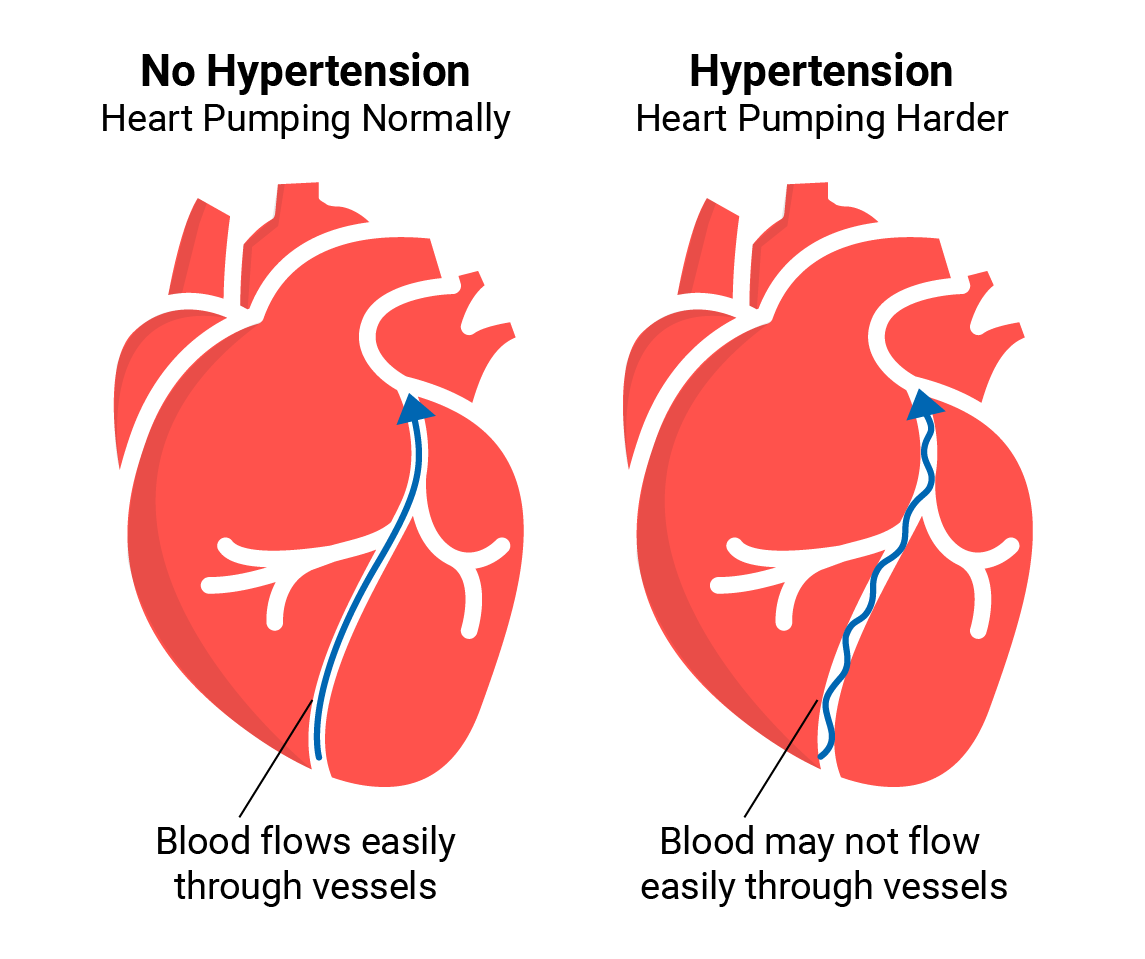
Pulse pressure is the difference between systolic and diastolic blood pressure. It is often increased in older people with hypertension. This can mean that systolic pressure is abnormally high, but diastolic pressure may be normal or low, resulting in isolated systolic hypertension. This condition is usually caused by stiffness of the arteries which occurs with age.
Increased resistance to blood flow may be due to disturbances in kidney function and abnormalities of the sympathetic nervous system. Inflammation of the vascular endothelium may also contribute to increased peripheral resistance. Excessive sodium or insufficient potassium in the diet leads to excessive intracellular sodium. Increased sodium can cause increased contractions of the vascular smooth muscle, thus decreasing blood flow and increasing blood pressure.
Types of hypertension
There are two types of hypertension: primary and secondary. Primary hypertension is raised blood pressure that is not caused by any other condition. Factors increasing its risk include:
- Old age
- Obesity
- Smoking
- Stress
- High sodium diet
- High intake of alcohol
- Sedentary lifestyle
- Long term sleep deprivation
Secondary hypertension occurs when it is linked with another condition or disease. Unlike the primary type, this condition is caused by numerous factors such as:
- Kidney disease
- Diabetes Mellitus
- Pregnancy
- Obstructive sleep apnea
- Tumors in the adrenal gland
- Hormonal imbalance
- Lupus
- Steroids, birth control pills, cough, and cold medicines
Hypertension, if left untreated, usually result in life-threatening complications. Therefore, controlling your blood pressure level is very important to avoid the following:
- Aneurysm
- Stroke
- Heart failure
- Kidney disease
- Dementia
- Loss of vision
Risk factors for hypertension
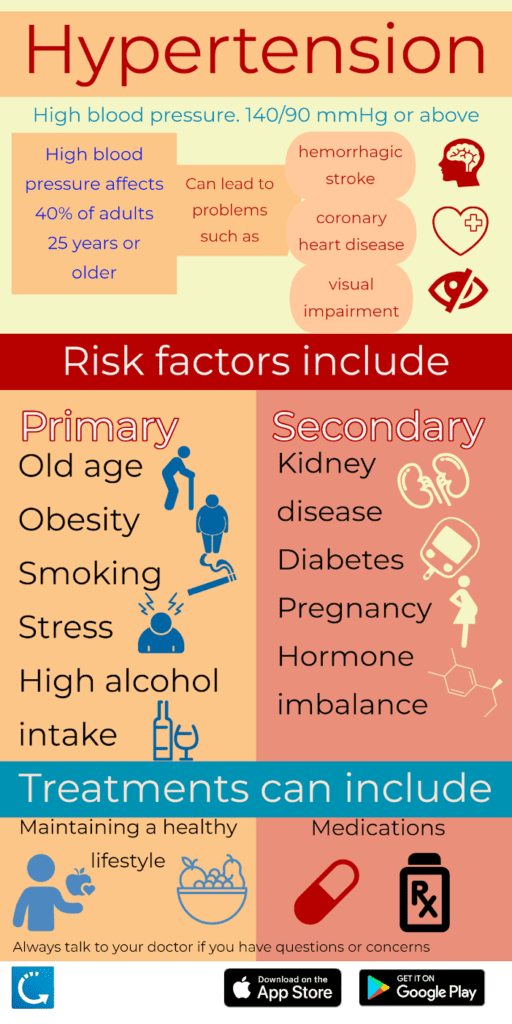
Genetic factors play a role in the development of hypertension. Aside from genetics, stress also adds on to the gravity of the disease. Having a sedentary lifestyle also puts you at risk, as well as being overweight with a poor, unbalanced diet (usually a high-sodium diet). Those living with hypertension should ensure that they maintain a healthy diet and physical activity.
People who suspect or have a family history of essential hypertension must make major changes to their lifestyles and diet. Otherwise, doctors may prescribe medications to maintain blood pressure. Smoking is also one of the activities that can increase your risk of acquiring such a condition. Excessive alcohol intake will also worsen your health status.
Age is another risk factor for hypertension. Those who are 45 and above are at higher risk. When a person reaches 65, he or she is already at risk for developing stage 2 hypertension. African Americans have the highest risk for developing hypertension. Male and female African Americans are both at a higher risk compared to others worldwide.
Gender also plays a huge role. Men tend to have a positive diagnosis before reaching 50 years of age. They are also more likely to develop related complications such as kidney disease in the future. Women, on the other hand, are prone to have essential hypertension after 55 years of age.
Diagnosis of hypertension
When you suspect that you may be at risk for hypertension, please visit your doctor and have a thorough check-up. Your doctor may do a physical examination as well as some tests (to check for heart and kidney problems) such as:
- Cholesterol test. Also called a lipid profile in other clinics.
- Echocardiogram. This examination uses sound waves to make a photo of your heart.
- Electrocardiogram (EKG or ECG). An EKG records the electrical activity of your heart.
- Kidney and other organ function tests. These can include blood tests, urine examinations or ultrasound tests to check if your organs are functioning properly. Abnormalities in the body may be underlying causes for your hypertension.
Treatment for hypertension
Specialists base their diagnosis and treatment recommendations on a series of tests to rule out other diseases. Once it is confirmed that you are hypertensive, your doctor can prescribe medications to help control and maintain your blood pressure levels. Your doctor checks your family medical history, as well as age, ethnicity and other factors. As the patient, you will have to make sure to adhere to the medication schedule for the treatment to be effective. The following are common blood pressure medications:
- Angiotensin-converting enzyme (ACE) inhibitors such as lisinopril (Zestril), benazepril (Lotensin), and captopril (Capoten). These drugs block the formation of a chemical that narrows blood vessels, thereby relaxing the blood vessels effectively.
- Angiotensin II receptor blockers (ARBs) include candesartan (Atacand) and losartan (Cozaar). These medicines work by blocking the action of the chemical that narrows the blood vessels.
- Calcium channel blockers such as amlodipine (Norvasc) and diltiazem (Cardizem). These drugs relax the muscles of the blood vessels.
- Diuretics like hydrochlorothiazide (Microzide) and chlorthalidone. These drugs actually work on the kidneys and help the body flush out excess sodium and water, which then reduces blood volume.
- Beta blockers such as acebutolol (Sectral) and atenolol (Tenormin). These drugs help lower blood pressure by making the heart beat slower and with less force. They are not as effective as a stand-alone but are often prescribed in conjunction with other drugs.
Lifestyle changes to make when living with hypertension
Medications are not the only solution for hypertension. It is equally, if not more important, to maintain a healthy lifestyle when living with hypertension. Hypertensive patients should eat foods with less salt and fat content. Fruits and vegetables are very important to include in your diet.
Having regular exercise also boosts the immune system and helps to maintain weight. Reducing your alcohol intake also helps to lower blood pressure as well as reducing your cigarette smoking. Caffeine is also linked with hypertension so reducing intake would be beneficial to your health. Lastly, sleep is very important for your health. Getting at least six hours of bedtime helps in lowering blood pressure levels.
Reading your blood pressure
The numbers you see on your blood pressure tracker journal are equally important. As defined, systole is the maximum amount of pressure your heart exerts when it beats, while diastole is the pressure exerted between heartbeats. Both numbers you see have a significant role in your cardiovascular system.
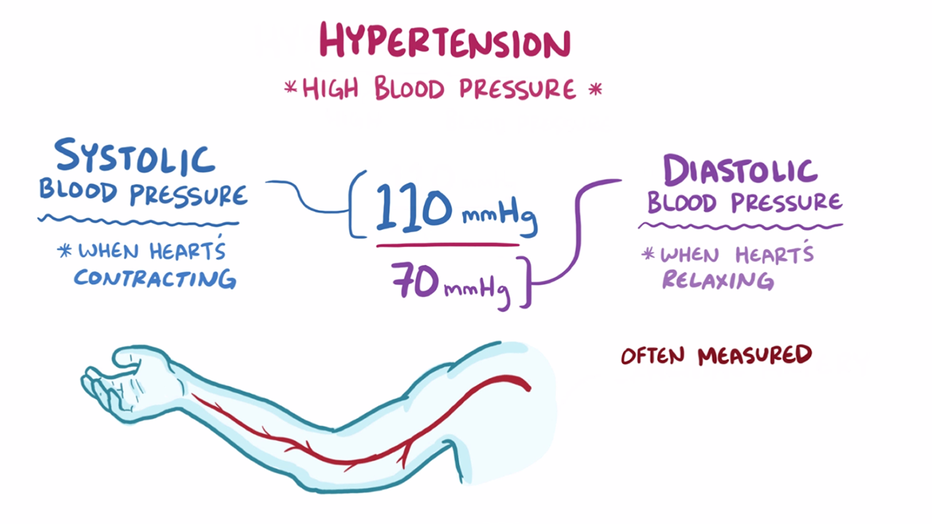
Therefore, it is very important to track your blood pressure because almost half of those with essential hypertension remain unaware of their condition. One of the life-threatening events with regards to blood pressure is a stroke or heart attack. It is the very first sign of this condition and not monitoring blood pressures may result in this.
So aside from lifestyle and diet change, be sure to track your blood pressure using hypertension tracker apps like CareClinic to avoid such complications. There are an estimated 10 million preventable hypertension-related deaths in the world annually. These deaths could easily be avoided with a simple treatment plan.
Measure your blood pressure regularly
A sphygmomanometer is an easy apparatus to use when monitoring BP. This instrument is also inexpensive and quick to use. Adults should measure their blood pressure measured at least once every five years. As you grow older, it should be done more frequently especially if you are at high risk for essential hypertension.
Taking your blood pressure does not have to be done only at the clinic or hospital. Those living with hypertension can measure their blood pressure at home as well.
The American Heart Association recently changed its guidelines and even decreased the threshold for hypertension. Blood pressure levels are as follows:
- Normal BP: Less than 120/80 mmHg
- Elevated BP: Systolic between 120-129 and diastolic less than 80 mmHg
- Stage 1 hypertension: Systolic between 130-139 or diastolic between 80-89 mmHg
- Stage 2 hypertension: Systolic at least 140 or diastolic at least 90 mmHg
With the recent changes, reports showed that around 31 million people in the United States are living with stage 1 hypertension. The change has a greater impact on the younger generation. Yet on a positive note, stage 1 essential hypertension often does not require medication. It only takes a few tweaks on the lifestyle to keep your blood pressure from reaching riskier levels. Living with a healthy and active lifestyle is key to ensuring a healthy heart.
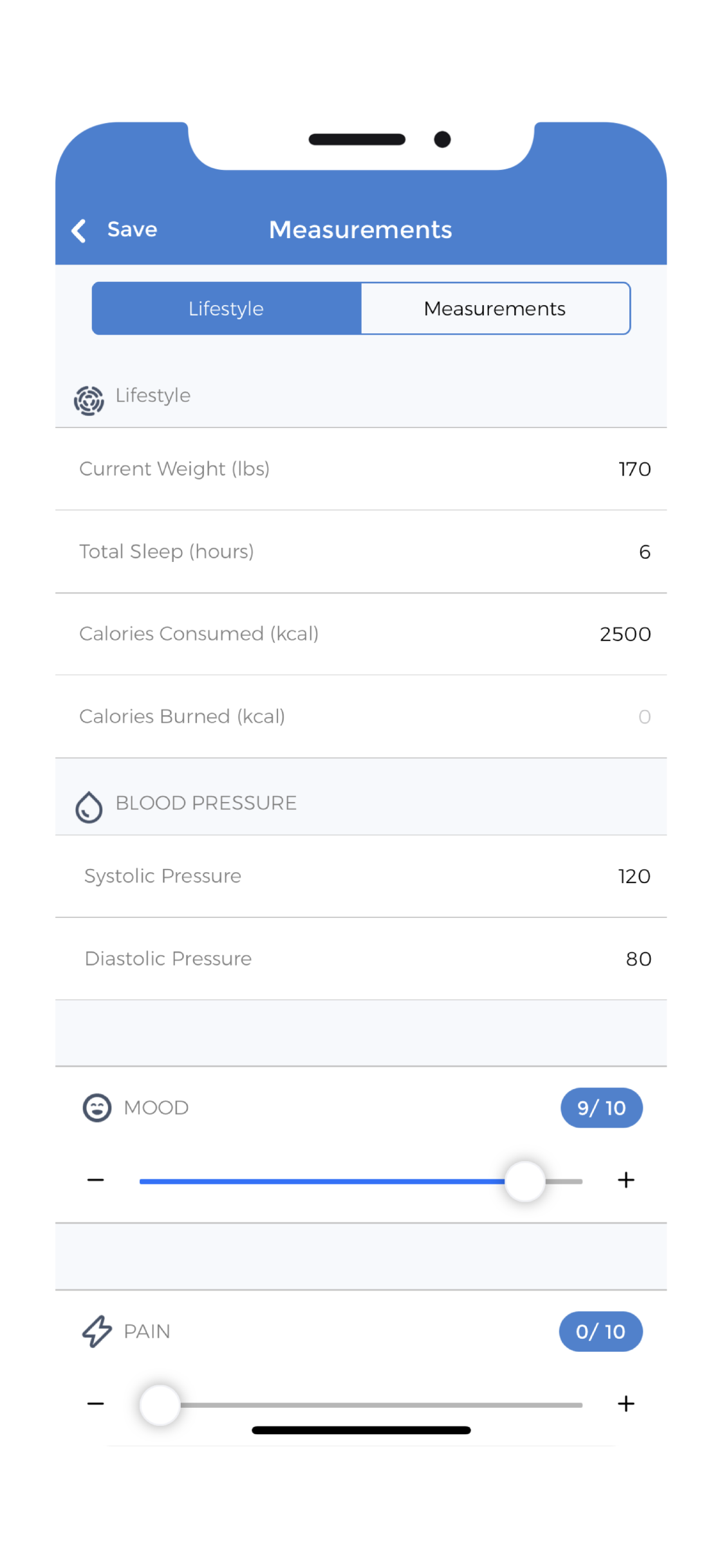 Free hypertension tracker app
Free hypertension tracker app
CareClinic is a helpful health app can serve as a hypertension tracker app. It has a symptom and activity tracker for hypertension where you can store information on a daily basis. Aside from monitoring hypertension, the app also has a medication reminder option to avoid missing any dose. CareClinic ensures that you stick to your treatment plan no matter what happens.
This Android and iOS mobile app functions as an effective health diary in which all data can be stored and shared with your specialists. All of the information that you input into the app will be of great help when your physician is working to create a treatment plan that is personalized to your health status and lifestyle preferences.
How can a hypertension tracker app help?
As you go on with your life experiencing the signs and symptoms, your healthcare provider will be able to adjust the medications and treatment options available to you. Controlling hypertension requires a change in lifestyle, which includes engaging in regular exercise aside from regularly taking your medications. Eating a healthy and balanced diet such as avoiding too much sodium helps lower your blood pressure levels.
Reducing or even avoiding alcohol and tobacco use has a significant effect on blood pressure levels. You can track all of these activities using the CareClinic health app. Taking medications such as beta blockers, ACE inhibitors and angiotensin II receptor blockers may also be tracked by the app efficiently. You can also set reminders to take your medications daily. The setting of alarms for different time schedules with the correct dosage can also be done. The app then sends notifications through pop-up windows or vibrating alerts.
This multi-functional app helps a lot in tracking not only the condition but your overall health status. You can record your weight and blood pressure readings along with any symptoms you may be experiencing. Setting exercise goals, as well as diet plans, can also be jotted down in this app. Another great feature of this app is that at the end of the month, you can easily print out a health report based on all the data. This report is very important when you visit your specialist. He or she will be able to check your blood pressure readings and symptoms, then create personalized treatment options. You and your healthcare team can also easily make adjustments to your treatment plan with the help of the information recorded in your app.
Identifying triggers for Hypertension
Hypertensive patients oftentimes do not feel sick as a result of their condition. The disease is often asymptomatic, which is why most do not strictly adhere to their prescribed treatment plans. Furthermore, some may not even know that they are hypertensive until visiting their doctor to measure their blood pressure. However, hypertension can become really critical if left untreated.
It is important for patients to collaborate with their healthcare team on taking their medications and following through with their treatment plans. Patients often take medications for regulating blood pressure levels over long periods of time. Individuals should take these medications at the right times and dosages.
CareClinic is a hypertension-tracking app that is tailored to each patient’s medical needs. The app has a built-in medication database to ensure that patients can stay informed on the medications they are taking. This hypertension app sends notifications when it is time to take your medication. Aside from medication reminders, the app also enables patients to easily record lifestyle changes, diet and blood pressure readings every day.
The features of this app not only reminds you of your treatment plan, but it also encourages you to consistently manage your condition by maintaining an active lifestyle and eating a healthy, balanced diet. If you are living with hypertension and need assistance with managing your condition, use CareClinic to adhere to your treatment plan, and discover correlations and triggers for your condition.
High Blood Pressure App
As the best pill tracker app and synergy and interaction tracker, doctors and pharmacists highly recommend CareClinic and its ability to successfully integrate information from various platforms. The premium upgrade for a mere $9.99 monthly allows for further access to communities, custom care plans, custom diet plans, custom workouts, access to advanced reminders and more. You are able to contact your healthcare professional or caregiver at any time and place through the app, as well as share your progress reports with them. CareClinic makes hypertension self-care easy and convenient, as it can act as your all-in-one health management tool.
CareClinic can help us maintain a healthier diet by ensuring that we keep track of our nutrients. The app provides a Nutrition Plan so that users can keep track of what they are eating and the number of calories their meal is. Users can also record how much protein, fat and carbs each meal contains. The app makes it very easy for those living with hypertension to maintain a healthy diet.
Reminders can also be sent through the app to ensure that users are eating a set amount of calories. Users can also set reminders to ensure that they are eating appropriate amounts from each food group. Aside from helping to improve eating habits, CareClinic can serve as a convenient and easy-to-use fitness app. It is important to maintain mental health and wellness through physical activity. Our bodies need to move in order to stay healthy. Simply stepping outside for a walk can make a huge difference and can also help with maintaining a strong immune system. Staying active can help to reduce feelings of anxiety and stress. The app helps those living with hypertension to maintain healthy levels of physical activity and normal sleeping habits.


